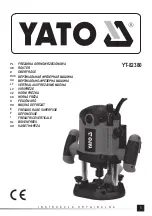
SIP-2
63/145
USER GUIDE - Rev. 3 (January 2018)
•
Policy
. This allows the filtering policy to be specified (
accept
,
drop
or
reject
).
When the filtering policy is
accept
, only packets complying with the established rule
are accepted. When the filtering policy is
drop
, on the other hand, packets
complying with the established rule are dropped. The
reject
filtering policy also
rules out packets complying with the established rule, but unlike drop, when the
packet is ruled out, the appropriate ICMP message is sent to the source address of
the packet.
•
Description.
This permits a description of up to 15 alphanumerical characters to
be specified.
•
Default Policy
. This allows the behaviour of the equipment filtering to be
determined as regards not being included in any specific rule of the respective
section.
Example:
A filtering policy is to be established to eliminate traffic present in the ethernet (eth0)
interface coming from host 10.0.0.5, whose destination is within the IP range
192.168.0.0/24. The
eth0
block configuration will be that shown in the figure.
FIGURE 32
Example of filtering configuration page
















































